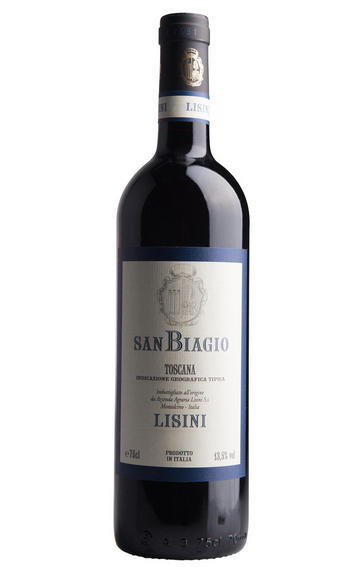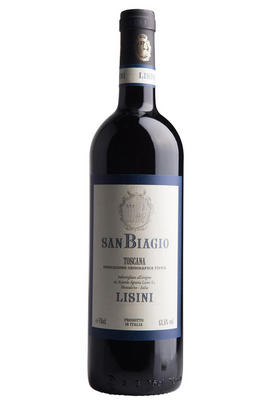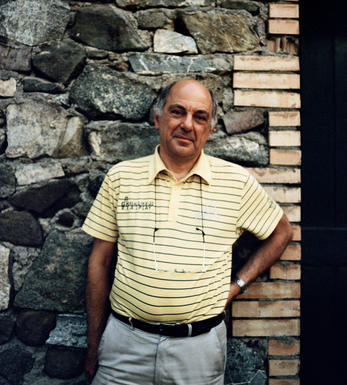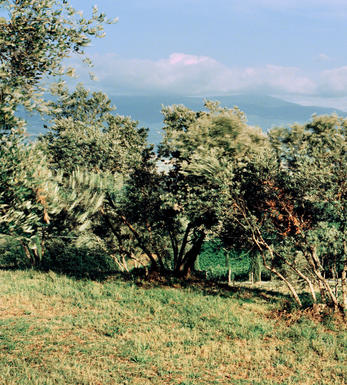
2021 San Biagio, Lisini, Tuscany, Italy

About this WINE

Lisini, Tuscany
The history of Lisini dates to the time of the Medicis. This is one of Montalcino’s oldest estates, and a founding member of the Corsorzio del Vino Brunello di Montalcino. Lisini is one of the few producers in Sant’Angelo in Colle, in the south-west of Montalcino.
The proximity here to Maremma gives maritime breezes warding against summer heat, which is especially important in as hot and dry a year as 2017. Thick woodland, olive groves and wild scrubs surround the 25 hectares under vine – a rural haven of the region’s finest terroir. An ancient river system sculpted the area, and with it the complex soils in Lisini’s vineyards. Fossil laced sand, clay and iron-rich soils, paired with altitudes of 300-400 metres, all play a leading role in the unique personality of Lisini’s wines.

Tuscany
Responsible for only 6 percent of Italy's total wine production in 2006 (half that of the Veneto) Tuscany may not be a heavyweight in terms of quantity, but as the home of two of the country's most famous fine wines - Chianti and Brunello di Montalcino - it certainly holds its own in terms of quality.
Tuscany is Italy's most ancient wine region, dating back to the 8th century BC when the Etruscans developed the area in parallel with the Greeks, before ceding to the Romans. Along with building roads and sewers, they developed the region's viticultural potential, using wood for winemaking rather than amphorae, and passing their expertise onto their French neighbours. With the demise of Rome in the 5th century AD, the Longobards established Lucca as the capital of what was then known as Tuscia. Florence and Siena became banking and trading hubs during the Middle Ages, with Chianti – then a white wine – first documented in the 14th century.Tuscany passed from the Medicis to the Habsburgs as part of the Holy Roman Empire, and then onto the Austrian Empire before becoming part of a reunified Italy in 1861. The quality of Chianti was first recognised by the Grand Duke of Tuscany, Cosimo III, who classified its finest areas in 1716.
Located in the west-central part of the country with the Tyrrhenian Sea lapping its coastline, Tuscany's climate ranges from Mediterranean on the coast to continental deep in the Apennines. More than two thirds of the province is covered with hills, an important terroir factor in the production of fine Tuscan wine. The finest such areas are Chianti Classico, Chianti Rufina, Brunello di Montalcino, Vino Nobile di Montepulciano, Morellino di Scansano and Bolgheri. Sangiovese (in its various clones) is the black grape of choice.
Recommended producers: Valgiano, Caiarossa, Villa Calcinaia, Bibbiano, Badia a Coltibuono, La Serena, Scopetone, Lisini, Sesti, San Giuseppe, Cerbaiona.

Sangiovese
A black grape widely grown in Central Italy and the main component of Chianti and Vino Nobile di Montepulciano as well as being the sole permitted grape for the famed Brunello di Montalcino.
It is a high yielding, late ripening grape that performs best on well-drained calcareous soils on south-facing hillsides. For years it was blighted by poor clonal selection and massive overcropping - however since the 1980s the quality of Sangiovese-based wines has rocketed upwards and they are now some of the most sought after in the world.
It produces wines with pronounced tannins and acidity, though not always with great depth of colour, and its character can vary from farmyard/leather nuances through to essence of red cherries and plums. In the 1960s the advent of Super Tuscans saw bottlings of 100% Sangiovese wines, as well as the introduction of Sangiovese/Cabernet Sauvignon blends, the most famous being Tignanello.


Buying options
Add to wishlist
Description
The 2021 San Biagio is open and inviting with a generous bouquet of mulberries, elderberry, black cherry and garden mint. On the palate the fruits are plump and juicy and there is a nice warmth coming through in the form of anise and with a dash of cinnamon and espresso. Too easy to enjoy.
Drink 2023 - 2028
Amy Johnson, Account Manager, Berry Bros. & Rudd
wine at a glance
Delivery and quality guarantee